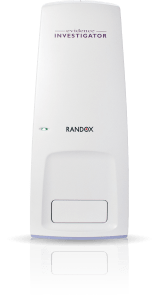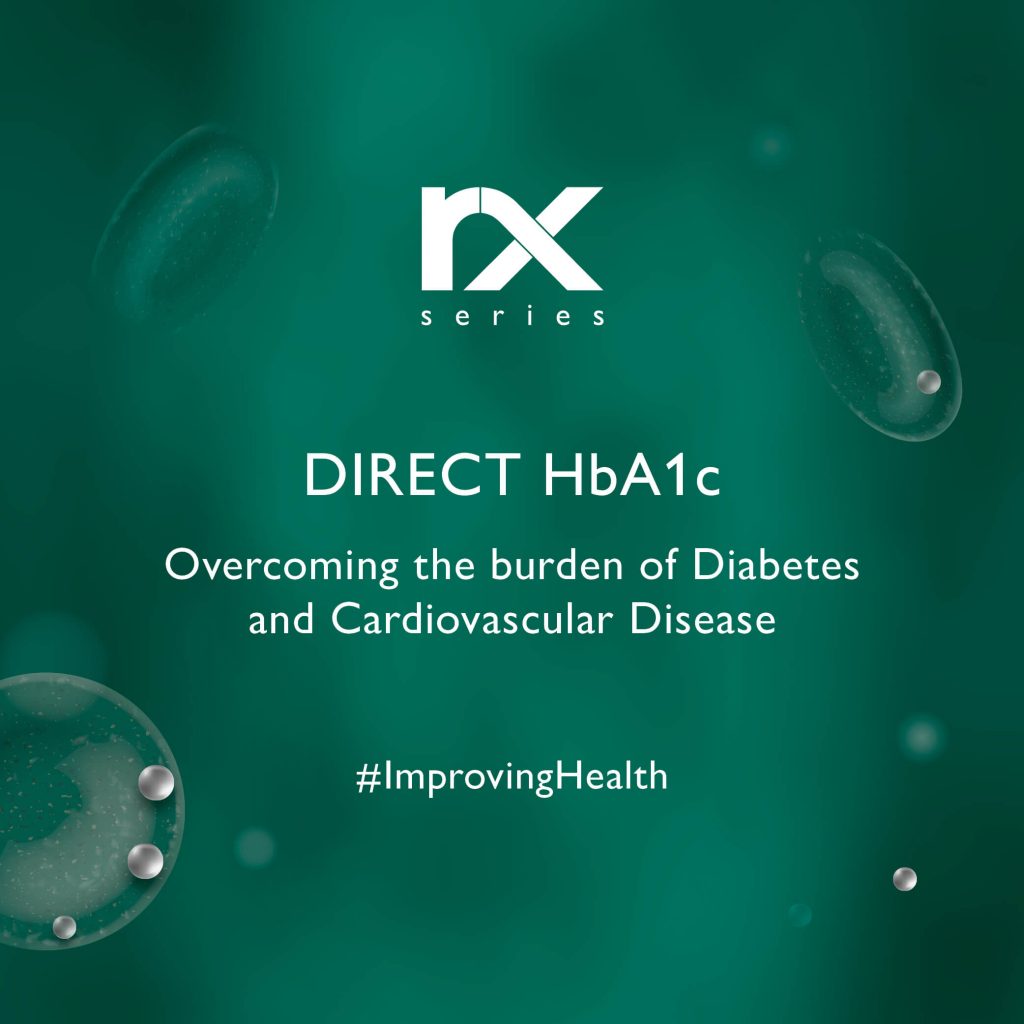Free Health Testing For Sandwell Residents As Council Partner With Randox Health To Detect Early Warning Signs of Serious Illness
Free Health Testing For Sandwell Residents As Council Partner With Randox Health To Detect Early Warning Signs of Serious Illness

Sandwell Council partners with Randox Health to launch free health checks service
Sandwell Council initiative places prevention at the centre of healthcare
Thousands of eligible Sandwell residents are being offered diagnostic NHS Health Checks to detect any early signs of diabetes, heart and kidney disease and hypertension.
The early identification of individuals with the potential to develop these conditions will enable the NHS to intervene and, in many cases, prevent the onset of potentially life-changing and life-threatening illnesses.
In a pioneering initiative, the Sandwell tests and online self-assessment provision will be provided by a partnership comprising the council’s Healthy Sandwell team, the NHS and diagnostics company Randox Health – whose tests and clinics will be used to facilitate the innovative testing. Tests and clinics will be available for Sandwell residents in both Sandwell and, if convenient, in Birmingham.
The awarding of the contract to Randox Health to provide the tests follows an open tender process by Sandwell Council. The company has demonstrated success in providing 17 million PCR tests to NHS Test and Trace during the Covid-19 pandemic, helping prevent thousands of hospitalisations and deaths in the UK.
Free tests will be offered to Sandwell residents aged between 40 and 74 who have not previously suffered coronary heart disease, strokes, diabetes or kidney disease. Each will, in the next few weeks, begin receiving letters inviting them to the 20-minute NHS check, with branding from Randox, Healthy Sandwell and the NHS. The letter will include a link to the Randox website through which the tests can be booked.
Sandwell residents who have not yet received a GP letter and believe they are eligible can visit the Randox website https://nhshealthcheck.randox.com, take an eligibility check and then book their own appointment.
Tests will be carried out by specially trained staff at a number of community pop-up clinics in locations in Sandwell such as leisure centres and community spaces, aiming to reach those most at risk of having an undiagnosed serious illness.
Tests for Sandwell residents will also be available at Randox Health’s Birmingham Clinic (39-40 High Street, B4 7SL).
Test results will be made available to GPs for inclusion on patient medical records through Health Diagnostics Ltd, a third-party provider. Randox will hold none of the data from the test results.
Not only will the testing programme enable prevention and mitigation through the early identification of serious illness, it will also allow lifestyle modification on issues including smoking, alcohol and weight management.
Councillor Suzanne Hartwell, Sandwell Council’s Cabinet Member for Adults, Social Care & Health, said:
David Ferguson, Chief Operating Officer for Randox Health said:
Editors Notes
1. Sandwell Council
Sandwell Council will participate in the partnership through Healthy Sandwell, which is part of the council’s Public Health team. Healthy Sandwell provides a range of services to support local people to make positive lifestyle changes, such as quitting smoking or losing weight. Further information: https://www.healthysandwell.co.uk/
2. Randox Health
Established in 1982, Randox is the largest healthcare diagnostics company from the UK and Ireland.
Undertaking research, development, manufacture and distribution of innovative laboratory tests and analysers, Randox provides 15% of all worldwide cholesterol tests and 10% of all clinical chemistry tests. More than 5% of the world’s population (over 370 million people) receive medical diagnosis using Randox products each year.
Randox Health focuses on the provision of timely and accurate testing to identify risk to health, improve clinical diagnoses and promote preventative healthcare; aiming to achieve better healthcare outcomes whilst reducing the burden on clinical services.
In early 2020 Randox recognised the threat from COVID-19 and quickly developed a test to accurately identify the virus. Testing at scale commenced within weeks to support the UK’s National Testing Programme and private clients. Randox has processed more than 25 million gold-standard PCR tests for the National Testing Programme and private COVID testing for travel.
Randox Health is clear that better diagnostics are unquestionably critical to future improvements within healthcare and is committed to remaining at the forefront of that field.
Its growing network of High Street clinics now operate in 20 locations around the UK and Ireland, including Birmingham.
Randox Laboratories and Roquefort Therapeutics Collaborate to Develop Midkine Cancer Antibodies

Randox and Roquefort Therapeutics collaborate to develop midkine cancer antibodies
Randox Laboratories collaborate with Roquefort Therapeutics, an LSE market listed biotech company, dedicated to developing first in class medicines in the high value, high growth oncology market. The partnership is focused on the field of medical diagnostics only, in relation to Roquefort’s Midkine antibody portfolio.
The collaboration Randox will allow to utilise Roquefort’s Midkine antibodies in the field of medical diagnostics. Randox will therefore engage with Roquefort in research programmes to identify new cancer diagnostics that will be treatable with the companies Midkine products.
Why this partnership is important?
Midkine is a herapin binding protein, known for being important in embryonic development. While normally undetected in healthy adults, it is often highly expressed in cancer, inflammatory conditions and autoimmune disorders. Extensive research has revealed that blocking Midkine with antibodies can help slow tumour growth, reduce metastasis and overcome treatment resistance.
Within the partnership, Randox focuses on medical diagnostics to detect cancers expressing Midkine, produce the diagnostics essential for clinical trials and help Roquefort Therapeutics remain focused on developing first in class oncology medicines.
Randox are highly committed to preventative healthcare through early and more accurate diagnostics therefore this partnership with Roquefort Therapeutics is vitally important. Early diagnosis significantly increases a patient’s chance of survival thus using medical diagnostics to identify patients with cancer expressing Midkine is essential to the development of first-in-class cancer medicines and the future of cancer treatments.
When talking about the partnership, Dr Peter Fitzgerald, Managing Director of Randox said
About Roquefort Therapeutics
Roquefort Therapeutics is a cancer focused biotech company developing first in class drugs in the high value and high growth oncology segment prior to partnering or selling to big pharma. Since listing in March 2021, Roquefort successfully acquired Lyramid Pty Ltd, a leader in the development of medicines for a new therapeutic target, Midkine and has since developed a leadership position in Midkine intellectual property.
Roquefort Therapeutics’ focused portfolio consists of four fully funded, novel patent protected, pre-clinical, anti-cancer medicines that include:
- Midkine antibodies with significant in vivo efficacy and toxicology studies
- Midkine RNA therapeutics with novel anti-cancer gene editing action
- MK cell therapy with direct NK-mediate anti-cancer action and
- SiRNA targeting novel STAT-6 target in solid tumour showing significant in VIVO efficacy.
For more information, please contact market@randox.com
Randox announces ‘Race against Dementia’ as partner charity for Randox Grand National Festival 2023

RANDOX ANNOUNCES ‘RACE AGAINST DEMENTIA’
AS PARTNER CHARITY FOR RANDOX GRAND NATIONAL FESTIVAL 2023
Thursday 16th February
Randox today announces that Race Against Dementia, a global charity founded by three-times Formula 1 World Champion Sir Jackie Stewart, OBE, as its charity partner for the Randox Grand National Festival 2023.
Today, across the globe, more than 55 million people are living with dementia, with someone new being diagnosed with the disease every three seconds. Unless a cure is found, it is estimated that one in three people born today will die with dementia.
Randox will support Race Against Dementia throughout the three-day Aintree festival, to highlight the impact of the disease and to raise funds for much needed research into its prevention and cure.
On Ladies Day (Friday 14th April), Randox’s sponsored race over the Grand National fences will be titled ‘The Randox Supports Race Against Dementia Topham Chase’, and there will be opportunities to reach out to both the racing public and, through the festival’s media coverage, to the nation.
The 2023 Festival will also enable a welcome return to Aintree for Sir Jackie, who raced at Aintree in the 1960s, at a time when Aintree was part of the Grand Prix circuit.
As a global diagnostics company, with over 40 years of experience and a focus on preventative healthcare, Randox and Race Against Dementia are natural partners.
In the pursuit of a cure for dementia, improved testing and diagnosis will both enhance patient management and greatly accelerate the race for treatment.
Dr Peter FitzGerald, Managing Director of Randox said:
“Randox is proud to partner with Race Against Dementia as our nominated charity for 2023.
“We understand the importance of taking action early regarding current and future health. As a global market leader within the clinical diagnostics field, it was an obvious choice for Randox to partner with a similarly ambitious organisation. Race Against Dementia is a cause very close to many of our hearts.”
Sir Jackie Stewart OBE, Founder of Race Against Dementia, said:
“Race Against Dementia is delighted to be supported by Randox Laboratories in our race to find a cure for dementia.
“It is a great privilege to partner with an organisation which is an active innovator and is supporting our mission to accelerate the progress of dementia research.
“We are confident that working together with Randox will help to raise funds that will allow us to break new ground in the search for a cure or prevention of dementia.
“On a personal front, I have raced at Aintree before – it is a pleasure to be back, with another ‘race’ in mind.”
Dickon White, Regional Director, The Jockey Club North West, said:
“We are proud to support Race Against Dementia at the Grand National Festival and extend our thanks to Randox for helping to bring this partnership to fruition.
“Being staged over the famous Grand National fences, the Randox Supports Race Against Dementia Topham Chase should prove a very suitable vehicle for helping to publicise the vital work of Race Against Dementia.”
About Randox Laboratories
With over 40 years of diagnostic experience, Randox is globally recognised as being at the forefront of diagnostic capability and understands the importance of comprehensive and reliable research.
Past research and development has identified key proteins associated with Alzheimer’s disease risk, stratifying at-risk populations, for early identification and assisting with clinical research.
Randox has recently made significant investment to deliver preventative, personalised testing packages across the nation and has opened over 20 new Randox Health clinics. Randox Health clinics focus on the provision of cost-effective, timely and accurate testing to identify risk to health, improve clinical diagnoses and promote preventative healthcare.
About Race Against Dementia
Race Against Dementia is a global charity, founded by Sir Jackie Stewart, OBE, to fund pioneering research into the prevention and cure of dementia.
RAD supports a number of Early Career Researchers in the UK, US, Australia, Europe and South Africa in order to accelerate dementia research.
RAD’s vision is a breakthrough in the prevention or treatment of dementia with the greatest of urgency.
For more information, please contact Market@randox.com
International Day of Women and Girls in Science!

International Day of Women and Girls in Science!
On Saturday 11th February, we are celebrating International day of Women and girls in Science! This day is an opportunity to celebrate and promote equal access to science for women and girls.
Why this Day is Important
The purpose of International Day of Women and Girls in Science (IDGWS) is to bring everyone forward for sustainable and fair development in society. The international day allows us to celebrate women’s achievements in science and places the necessary focus on ensuring girls are equally equipped with the skills necessary to enter a career in STEM.
This year commences the 8th year of International Day of Women and Girls in Science and aims to particularly focus on the role of women and girls in science in relation to the Sustainable Development Goals (SDGs). As Gender equality has always been a fundamental issue for the United Nations, the empowerment of women and girls will make a vital contribution, not only to economic development, but also across all the Goals of the 2030 Agenda for Sustainable Development. In doing so the IDWGS aims to connect women and girls in science to the international community, strengthening connections to science, society and the development of strategies aimed towards the future.
*Click the individual photographs for their full interview*
International Day of Women and Girls in Science!

International Day of Women and Girls in Science!
On Saturday 11th February, we are celebrating International day of Women and girls in Science! This day is an opportunity to celebrate and promote equal access to science for women and girls.
Ahead of the 11th, we have interviewed five influential Women who fulfil STEM based roles across Randox Laboratories. They have shared their experiences and thoughts on Women and girls in the science industry.
Our fifth interview is with Marketing Manager, Lynsey Adams.

Why did you pursue a career in STEM?
I have always been interested in biology and what makes us unique. For that reason, I chose to study Genetics at Queens University Belfast. I have been lucky enough to work in the life sciences industry ever since.
What is your role in Randox and how long have you worked in the company for?
When I first came to Randox 15 years ago, I started off in Technical Support. I then progressed into the Marketing department and worked my way up to where I am today, to be the Head of Marketing. My role predominantly involves Marketing our scientific product ranges as well as B2C product offerings and sponsorships. Having a background in science has helped me to excel in my Marketing role and I am fortunate to be able to have the opportunity to do both the things that I enjoy and am passionate about.
What change have you seen for women in science over the years?
There has been an increase of women in STEM in general, whether that be more females studying STEM related subjects at university or exploring a career in STEM. Throughout the years, I have been privileged to work with so many females in managerial and authoritative roles within Randox.
Have you found it harder or any different going into your career in science as a woman?
Throughout the years I have been fortunate enough to have female teachers and lecturers provide crucial STEM related education who encourage females to pursue a career in STEM. During my working career I have experienced the same opportunities as other colleagues and seen an increase in women exceling in science.
How do you think we can encourage more women to go into the science industry?
Awareness of the varied career paths available within STEM related industries would be beneficial. The availability of work experience, placement, apprenticeship and graduate programmes like those offered at Randox helps to expose both males and females to the many exciting opportunities in the field.
If you have one piece of advice as a woman starting out the STEM industry, what would it be?
STEM is an equal playing field, so have confidence in your own ability and intelligence to get to where you want to be.
For more information, please contact Market@randox.com
Celebrating World Antimicrobial Awareness week!

It’s World Antimicrobial Awareness week!
Antimicrobial resistance occurs when bacteria, viruses, fungi, and parasites resist the effects of medications, making common infections harder to treat and increasing the risk of disease spread, severe illness and death. As a result of drug resistance, antibiotics and other antimicrobial medicines become ineffective and infections become increasingly difficult or impossible to treat.
Randox want to take part in the global campaign that is celebrated annually to improve awareness and understanding of Antimicrobial. We have interviewed one of our Molecular specialists, Dr Dwaine Vance on how our revolutionary Randox products aid in the fight against AMR.
We are urging the public to help raise awareness of antimicrobial resistance. Randox is committed to the ongoing development of products and services as well as our research into numerous disease areas to improve health worldwide.
To find out more, visit- www.randox.com or email us- market@randox.com
Celebrating World Diabetes Day 2022!

Celebrating World Diabetes Day, 14th November 2022!
Diabetes is a serious medical condition that causes blood glucose (sugar) levels to become too high. This can cause complications such as heart disease, stroke, kidney problems or nerve damage if not treated.
Although there is no cure for Diabetes, the condition can be controlled and monitored.
There are three main types of diabetes, type one, type two and gestational diabetes. The former two are lifelong and can cause life threatening complications if not monitored effectively.
Type one diabetes is when the body can’t make insulin, which is thought to be caused by an autoimmune reaction. In the UK, around 8% of the population have type one.
Type two diabetes is generally caused from lifestyle, when the pancreas doesn’t work properly and can’t keep your blood sugar levels from rising. Type two represents around 90% of people with diabetes in the UK.
Gestational diabetes Mellitus (GDM) is a form of diabetes that appears in pregnancy, characterised by high blood sugar due to the hormones produced in pregnancy. In the UK, around 5% of pregnant women are diagnosed every year.
Globally, Diabetes affects more than 415 million people, with type 2 being the most common.
People with T1D have an estimated 50% risk of developing Chronic Kidney Disease over their lifetime. CKD can progress to kidney failure, requiring dialysis or a kidney transplant. Taking a personalized approach to kidney disease screening for people with type 1 diabetes (T1D) may reduce the time that chronic kidney disease (CKD) goes undetected, according to a new analysis performed by the Epidemiology of Diabetes Interventions and Complications study group.
World Diabetes Day aims to increase visibility around the condition and can help sufferers feel less alone. Charities such as Diabetes UK also use the day to help promote awareness and information around the condition to help get people diagnosed earlier through campaigns such as #RewriteTheStory.
Randox reagents cover a spectrum of laboratory testing which can help monitor Diabetes and the effectiveness of management. This can help prevent serious complications which can become life threatening.
Diagnosis and Monitoring
Fructosamine (Glycated Protein) has been identified as an early indicator of diabetic control compared to other markers such as HbA1c. HbA1c represents the average blood glucose levels for the previous 2-3 months, conversely fructosamine reflects average blood glucose levels of the previous 2-3 weeks. HbA1c levels may also be impacted by genetic, haematological and disease-related factors. The enzymatic Fructosamine method also offers improved specificity and reliability compared to conventional NBT-based methods and does not suffer from non-specific interferences unlike other commercially available Fructosamine assays.
Complications Monitoring – Ketoacidosis
D-3-Hydroxybutyrate (Ranbut) is the most sensitive ketone for the diagnosis of ketosis, in particular diabetic ketoacidosis (DKA) , because it represents approximately 80% of ketones present in blood during DKA. The nitroprusside method commonly used in semi-quantitative dipstick tests only detects acetone and acetoacetate making it less accurate.
Complications Monitoring – Renal Dysfunction
Cystatin C is extremely sensitive to very small changes in GFR and has been identified as a strong predictor of clinical outcomes associated with chronic kidney disease (CKD). Cystatin C doesn’t have a ‘blind area’ like creatinine. Up to 50% of renal function may be lost before significant creatinine elevation occurs. NICE guidelines recommend cystatin C testing due to its higher specificity for significant disease outcomes.
To find out more visit: https://www.randox.com/diabetes-reagents/
Or email us at: reagents@randox.com
Acute Kidney Injury
Multiplex Detection of Acute Kidney Injury from a Single Sample
Acute kidney injury (AKI) is currently diagnosed using serum creatinine as recommended by the KDIGO guidelines. Serum creatinine however, has poor sensitivity and specificity for AKI lagging behind both renal injury and recovery. There is an immediate need for more sensitive biomarkers to enables earlier identification of AKI, monitor drug toxicity and identify patients at an increased risk of CKD, end-stage renal disease or long-term kidney dialysis.
The National Institute for Health and Care Excellence (NICE) has highlighted that is important that patients are assessed for AKI on admission to hospital or transfer, monitored for AKI throughout their stay and AKI is managed appropriately if it develops.
Utilising patented Biochip Technology, the Randox Acute Kidney Injury (AKI) array simultaneously tests for four novel biomarkers delivering early diagnosis and monitoring of treatment efficacy It may also help you conduct safer and faster clinical trials.

Randox Acute Kidney Injury (AKI) Array (4-plex)
This marker is highly upregulated in kidney tubule cells following nephrotoxic injury severe enough to result in acute renal failure, acute tubular necrosis or acute tubulo-interstitial nephropathy.
Due to its small size and basic pH, Cystatin C is freely filtered by the glomerulus. It is then reabsorbed by tubular epithelial cells and subsequently metabolized. Accumulation of Cystatin C in urine is specific for tubular kidney damage and suggests reduced reabsorption at the proximal tubules as a result of toxicant-induced kidney injury.
Expression of Clusterin is upregulated following a variety of renal injuries and is detectable in urine following acute kidney injury induced by administration of nephrotoxic agents. This occurs before the profound renal transformations that give rise to changes in creatinine and BUN.
KIM-1 is a 30kDa type 1 transmembrane glycoprotein found on actvated CD4+ T cells. It is undetectable in healthy kidney tissue but is expressed at very high levels in proximal tubule epithelial cells in the kidney after toxic injury.
The Evidence Investigator
Meet the Evidence Investigator
The Randox AKI array has been developed for the Evidence Investigator, a semi-automated benchtop immunoassay analyser.
The AKI array would improve patient risk stratification whilst monitoring the effectiveness of treatments & drug toxicity by simultaneously and quantitatively detecting multiple urine biomarkers of kidney damage-related analytes from a single sample.

Want to know more?
Contact us or visit our Investigator Webpage
Rare Disease Day: 28th February 2019
28th February 2019
Rare Disease Day: 28th February 2019
Rare Disease Day raises awareness of rare diseases and how patients’ lives are affected. Many rare diseases remain incurable and many go undiagnosed. 1 in 20 people will live with a rare disease at some point in their life and this is why it is so important to raise awareness.1
What is a rare disease?
There is no single definition for a rare disease, as many countries identify them differently. In the United States, the Rare Diseases Act of 2002 defines a rare disease by its prevalence: “any disease or condition that affects fewer than 200,000 people in the United States”. However, the EU defines a rare disease as a condition that affects less than 5 in 10,000 of the population. There are approximately 7000 rare diseases and disorders and 50% of people affected by rare diseases are children.2,3
Hyperlipoproteinemia type III
This rare disease day, Randox will be raising awareness of hyperlipoproteinemia type III. Hyperlipoproteinemia type III, also known as dysbetalipoproteinemia or broad beta disease, is a rare genetic disorder characterised by improper breakdown of lipids, specifically cholesterol and triglycerides. The condition is caused by mutations in the Apo-E gene, however the inheritance of this condition is complicated due to the development of symptoms having to be triggered by a secondary factor to raise lipid levels. These factors include diabetes, obesity or hypothyroidism.
It is unknown exactly what the prevalence of the condition is, but it is estimated to affect approximately 1 in 5,000 – 10,000 of the general population and it has been found that it affects males more often than females, with women rarely being affected until after menopause.4,5
Figure A. Example of cholesterol and lipid build-up [6]
Symptoms
Symptoms for hyperlipoproteinemia type III will vary for each individual and some people may even be asymptomatic. The most common symptom is the development of xanthomas which are deposits of fatty material, the lipids, in the skin and underlying tissue. Xanthomas may appear on the palms of the hands, eyelids, soles of the feet or on the tendons of the knees and elbows.
> Chest pain or other signs of coronary artery disease
> Cramps in the calves when walking
> Sores on toes
> Stroke-like symptoms such as trouble speaking, dropping on one side of the face, weakness in an arm or a leg and a loss of balance6
Complications can arise if the condition is left untreated and these can include: myocardial infarction, ischemic stroke, peripheral vascular disease, intermittent claudication and gangrene of the lower extremities.7
Diagnosis
Although there is no specific diagnostic test for hyperlipoproteinemia type III, diagnosis is based on clinical evaluation and identification of symptoms. Research has indicated that an algorithm comprising a number of dysbetalipoproteinemia indices may be helpful in the diagnosis of the disease. These include:
> Low apolipoprotein B to total cholesterol ratio
> Elevated levels of triglycerides
> Elevated levels of total cholesterol8
Managing the condition
The condition cannot be cured but treatment is to control conditions such as obesity, hypothyroidism and diabetes. Most patients will go through dietary therapy to control their intake of cholesterol and saturated fat. This prevents xanthomas, high levels of lipids in the blood, exercise will also help to lower lipid levels. However, dietary changes may not be effective for some individuals and this is where drugs may be used to lower lipid levels instead.
How Randox can Help
Randox offer a range of routine and niche assays within the lipid testing panel to monitor lipid levels and to identify associated complications. Some of these tests include:
Apolipoprotein B
The Randox Apolipoprotein B tests utilises an immunoturbidimetric method, offers a wide measuring range and is available liquid ready-to-use for convenience and ease of use.
Total Cholesterol
The Randox Total Cholesterol test utilises the CHOD-PAP method and offers an extensive measuring range with a wide range of kits available to suit a wide range of laboratory sizes.
Triglycerides
The Randox Triglycerides test utilises the GPO-PAP method while offering an extensive measuring range with both liquid and lyophilised formats available offering choice and flexibility.
Want to know more?
Contact us or download our Cardiology and Lipid Testing brochure to learn more.
Related Products
Randox Reagents
Resource Hub
Lipid Panel Page
References
[1] Rare Disease Day. What is Rare Disease Day? Rare Disease Day. [Online] 2019. [Cited: February 21, 2019.] https://www.rarediseaseday.org/article/what-is-rare-disease-day
[2] Genetic Alliance UK. What is a Rare Disease? Rare Disease UK. [Online] 2018. [Cited: February 21, 2019.] https://www.raredisease.org.uk/what-is-a-rare-disease/
[3] NZORD. Rare Disease Facts and Figures. NZORD. [Online] 2019. [Cited: February 21, 2019.] https://www.nzord.org.nz/helpful-information/rare-disease-facts-and-figures.
[4] NORD. Hyperlipoproteinemia Type III. NORD. [Online] 2019. [Cited: February 21, 2019.] https://rarediseases.org/rare-diseases/hyperlipoproteinemia-type-iii/
[5] GARD. Hyperlipidemia Type 3. National Centre for Advanciing Translational Sciences. [Online] December 29, 2016. [Cited: February 21, 2019.] https://rarediseases.info.nih.gov/diseases/6703/hyperlipidemia-type-3
[6] Falck, Suzanne. Everything you need to know about hyperlipidemia. Medical News Today. [Online] December 21, 2017. [Cited: February 21, 2019.] https://www.medicalnewstoday.com/articles/295385.php
[7] Medline Plus. Familial Dysbetalipoproteinemia. Medline Plus. [Online] May 16, 2018. [Cited: February 21, 2019.] https://medlineplus.gov/ency/article/000402.htm.
[8] Dysbetalipoproteinemia: Two cases report and a diagnostic algorithm. Kei, Anastazia, et al. 4, s.l. : World Journal of Clinical Cases, 2015, Vol. 3.
Overcoming the burden of Diabetes and Cardiovascular Disease
The Prevalence
Cardiovascular disease (CVD) is the number one cause of death globally with more people dying annually from CVD than any other disease state. In 2018, according to the American Heart Association, CVD accounted for nearly 836,546 deaths in the USA (1) with over 17 million known deaths recorded worldwide. It is also proclaimed that around 1.5 million people globally die each year because of diabetes and diabetes related complications. (2) Is there a common link? Can this issue be controlled?
Studies have suggested that diabetes is one of the leading related conditions associated with increased risk of CVD death. A recent study undertaken in 2018 examined the association of many risk factors associated with CVD, the study was broken down by disease state with over 17,000 participants involved. The findings highlighted that 17.9% of these patients suffered from diabetes mellitus and death from a cardiovascular event. (3) Many other pilot and research studies discovered similar findings considering further risk factors such as high blood pressure, abnormal cholesterol and high triglycerides, obesity, lack of exercise and lifestyle choices such as smoking, alcohol and drug abuse. All of which are common with patients who suffer from diabetes, placing them at an increased risk of CVD.
Findings highlighted that over 68% of people aged over 65 living with diabetes die from some form of heart disease with 16% of individuals dying from an ischemic stroke. (4) The ability to tackle the prevalence of increased death from CVD and diagnosis of diabetes has become a global burden with the international diabetes federation projecting that 592 million people worldwide will have diabetes by 2035. (5)
Worldwide, the increase of diabetes is becoming an economic burden on the patient and healthcare systems mainly due to the direct costs of medical care and the indirect costs of moderated productivity, tied to diabetes and CVD related morbidity and mortality. Many scholars have highlighted economic burden as a primary attribute to both macrovascular and microvascular complications such as coronary artery disease, myocardial infarction, hypertension, peripheral vascular disease, retinopathy, end-stage renal disease and neuropathy. (6)

Overcoming the Burden
As CVD is the most prevalent cause of mortality and morbidity in patients with diabetes, effective treatment and analysis is required to control and decrease the number of CVD deaths across the globe. Tackling this issue head on, the Randox RX series introduce Direct HbA1c which refers to glycated haemoglobin which is a product of haemoglobin (a protein which can be found in red blood cells) and glucose from the blood making it glycated.
Testing for HbA1c provides an indication of what an individual’s average blood sugar level has been over recent weeks/months and is generally considered as an indicator of how well the patient is managing and controlling their diabetes. This is significant for those who suffer from diabetes because the higher the levels of HbA1c, the higher the chance of an individual suffering from further diabetes related issues, therefore testing for HbA1c improves the predictions of a CVD event occurring.
The Randox RX series have Direct HbA1c testing capabilities on the RX Daytona +, RX imola and RX modena. Our latex enhanced immunoturbidimetric method which the RX series utilises makes the test simple and quick to perform. The removal of the pre-dilution step removes the risk of human error compromising your results without the need for a separate HbA1c analyser.
Offering the world’s largest test menu, the RX series has an extensive range of cardiac, diabetes and lipid tests with excellent correlation to gold standard methodologies designed to allow laboratories to expand their testing capabilities onto one single platform, providing cost savings through consolidation.
References:
- American Heart Association. (2018). Heart Disease and Stroke Statistics 2018 At-a-Glance.Available: https://www.heart.org/-/media/data-import/downloadables/heart-disease-and-stroke-statistics-2018—at-a-glance-ucm_498848.pdf. Last accessed 7th Feb 2019.
- World Heart Federation. (2017). Cardiovascular diseases (CVDs) – Global facts and figures.Available: https://www.world-heart-federation.org/resources/cardiovascular-diseases-cvds-global-facts-figures/. Last accessed 7th Feb 2019.
- Gomadam, P et al, (2018). Blood pressure indices and cardiovascular disease mortality in persons with or without diabetes mellitus. Journal of Hypertension. 36 (1), 1-5.
- Heart attack and stroke symptoms. (2018). Cardiovascular Disease and Diabetes.Available: https://www.heart.org/en/health-topics/diabetes/why-diabetes-matters/cardiovascular-disease–diabetes. Last accessed 7th Feb 2019.
- Aguiree F, Brown A, Cho NH, Dahlquist G, Dodd S, Dunning T, Hirst M, Hwang C, Magliano D, Patterson C. (2013) IDF Diabetes Atlas.
- Bahia LR, Araujo DV, Schaan BD, Dib SA, Negrato CA, Leão MP, Ramos AJ, Forti AC, Gomes MB, Foss MC, Monteiro RA, Sartorelli D, Franco LJ, Value Health. (2011), 137-40.











